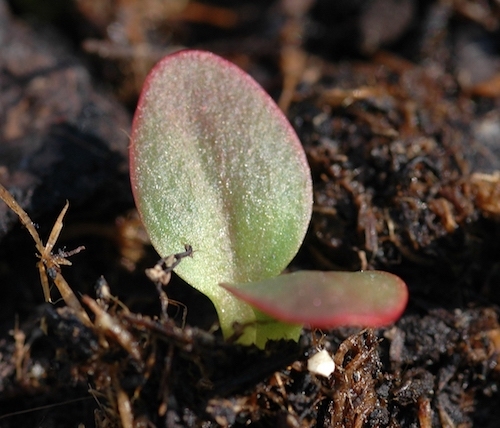show/hide words to know
Concentration gradient: a difference in concentration of a dissolved substance in solution. Areas with more of the substance have a higher concentration. Areas with less of the substance have a lower concentration.
Enzyme: a protein that changes the speed of chemical reactions.
Phosphorus: 15th element on the periodic table of elements. Phosphates are mined to obtain phosphorus for use in agriculture and industry.
Photosynthesis: a set of chain reactions that convert light energy into chemical energy. Photosynthesis also produces energy-rich carbohydrates like starch. Photosynthesis occurs in the chloroplast of a plant cell... more
Proton: the part of a molecule that has a positive electric charge; a hydrogen ion that has lost its electron (written as H+).
Moving Sugars in Plants
Plants are every bit as complex as animals. Just as you may stretch in the morning sun, some plants are able to unfold their leaves, or even turn to face the sunlight. Just like us, they have specialized cells and tissues that help them live and grow. Yet, one of the biggest differences between us is that we have to find food to eat, while plants make their own. Most plants do this in their leaves through a process called photosynthesis.
Plants have chlorophyll that uses sunlight to gather energy. The energy is then used to change carbon dioxide from the air into sugars like glucose and fructose. The plants then load the sugars from the leaves into the phloem in preparation for transport to other areas of the plant. Phloem are tissues that look like tubes. They transport sugars throughout the plant and supply it to tissues like roots, flowers and fruits that depend on this sugar to grow. Think of them like the veins in our body that move blood.
Moving sugars from cells in the leaves to cells in the phloem is difficult for plants. The concentration of sugar molecules can affect how the sugar acts. Different parts of plants have different concentrations of sugars. These different concentrations form what are called concentration gradients. To move sugars to some areas or cells, up concentration gradients, plants need to use proton pumps, many which require phosphorus and other enzymes. If there isn't enough phosphorus, the plant can be weak or stunted, or may even die.
Additional images via Wikimedia Commons. Plant seedling image by Bff.
View Citation
Bibliographic details:
- Article: Moving Sugars in Plants
- Author(s): Joshua Haussler, Karla Moeller
- Publisher: Arizona State University School of Life Sciences Ask A Biologist
- Site name: ASU - Ask A Biologist
- Date published: December 19, 2015
- Date accessed: April 17, 2024
- Link: https://askabiologist.asu.edu/moving-sugars-plants
APA Style
Joshua Haussler, Karla Moeller. (2015, December 19). Moving Sugars in Plants. ASU - Ask A Biologist. Retrieved April 17, 2024 from https://askabiologist.asu.edu/moving-sugars-plants
Chicago Manual of Style
Joshua Haussler, Karla Moeller. "Moving Sugars in Plants". ASU - Ask A Biologist. 19 December, 2015. https://askabiologist.asu.edu/moving-sugars-plants
Joshua Haussler, Karla Moeller. "Moving Sugars in Plants". ASU - Ask A Biologist. 19 Dec 2015. ASU - Ask A Biologist, Web. 17 Apr 2024. https://askabiologist.asu.edu/moving-sugars-plants
MLA 2017 Style

Growing plants survive by creating energy from sunlight through the process of photosynthesis. Click the image to learn more about the recipe for plant growth.
Be Part of
Ask A Biologist
By volunteering, or simply sending us feedback on the site. Scientists, teachers, writers, illustrators, and translators are all important to the program. If you are interested in helping with the website we have a Volunteers page to get the process started.








